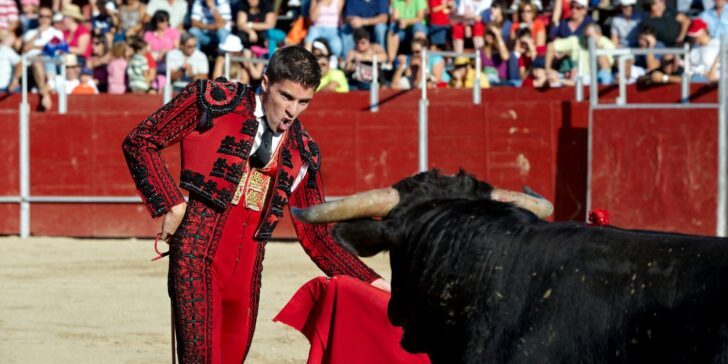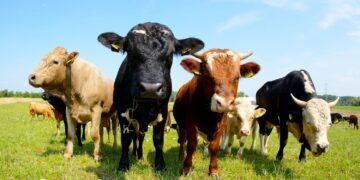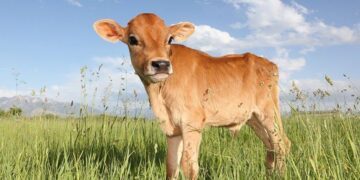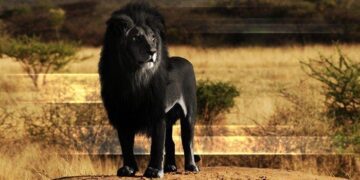Red symbolizes love. So, what’s the deal with bulls not loving the color red?
You might think that bulls go crazy when they see a red cape since the color is also associated with anger. Well, in this article, you’ll discover whether that’s a fact or a myth.
Speaking of facts, you’ll also learn some different facts about bullfighting, ranging from why bullfighters use red capes to countries that have banned the event.
Why are bulls so aggressive?
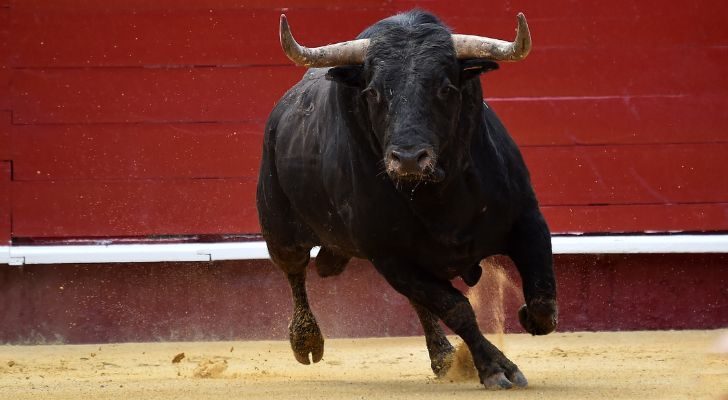
A lot of it comes down to gender. Testosterone levels are higher in male mammals, which is why bulls are more aggressive than cows.
Bulls aren’t just aggressive because of testosterone, though. They’re highly territorial creatures that will fight anything that they feel is encroaching on their turf.
Combining this aggression of bulls with their massive size and strength makes them dangerous animals. In addition, bulls also have sharp horns that can mortally wound you.
That said, there are ways to get around bulls’ aggression. For example, farmers often put nose rings on their bulls. This greatly helps mitigate the danger of being around these dangerous animals, allowing them to control the bulls from a safe distance.
So does the color red make bulls angry?
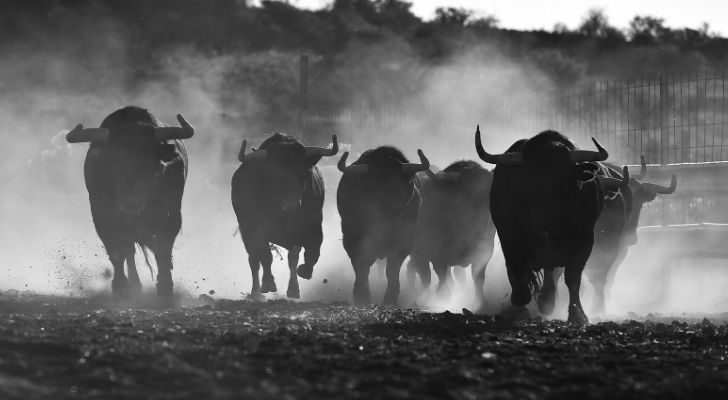
To put it simply, the answer is no! Instead, it’s because of the aggressive whipping of the cape.
The reason why red couldn’t possibly be what makes bulls angry is that they can’t even see the color, since their eyes lack L-cones – the cone cells associated with detecting the color red.
This lack of L-cones makes bulls dichromatic creatures, and it causes them to have trouble differentiating red from green.
If you’re wondering how bulls perceive the color red, it appears as a mix between yellow and grey.
Why do bullfighters use a red cape, then?
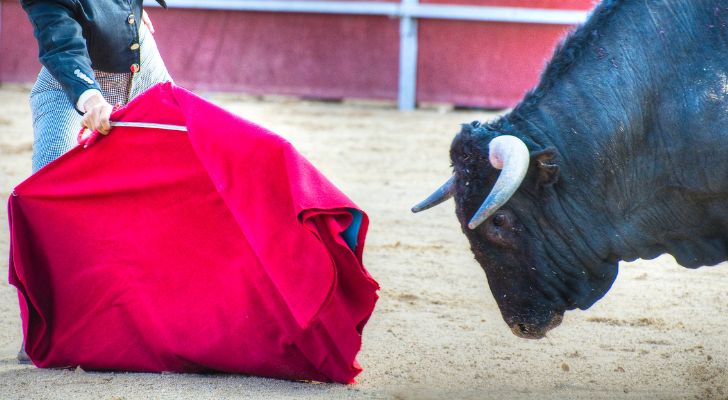
The red cape that bullfighters, or matadors, use in bullfights is called a muleta. The use of muletas is deeply ingrained in bullfighting tradition.
The origins of the muleta go back to 1726 when a Spanish matador named Francisco Romero introduced it to the world of bullfighting. Nowadays, It’s used in the final stage of a Spanish-style bullfight, wherein bulls are finished off with a sword.
Of course, bullfights can be rather bloody events. And when you come to think of it, this makes red a logical choice for the cape.
The color red can conceal the bloodstains of bulls, so it’s also much easier to clean the cape afterward.
For most of the fight, though, Matadors use a different cape that’s colored pink on the outside and yellow on the inside.
What happens to the bull after a bullfight?
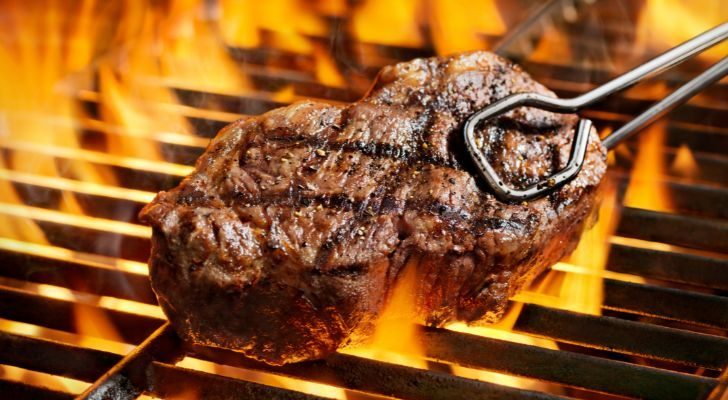
Unless pardoned, or it’s a Portuguese-style bullfight, bulls are killed in the bullring before the event ends.
Even in the rare cases that matadors don’t survive the bullfight, the same outcome still occurs for the unfortunate animal.
After a bullfight, the bull’s carcass is taken out of the bullring and sent to a slaughterhouse, as its meat will be used for dishes.
There’s even a restaurant in Spain called Casa Toribio that specializes in using meat from bulls used in bullfights – they get their meat from the Las Ventas bullring in Madrid.
But besides processing meat for human consumption, the meat is also used to make pet food and animal feed.
What breeds of bulls are used for bullfighting?
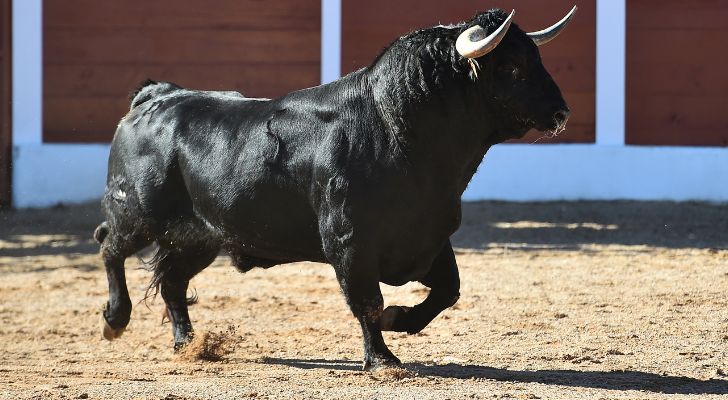
The bulls used for bullfighting are toro bravo bulls, or Spanish fighting bulls, a breed of cattle native to the Iberian Peninsula.
In terms of their physical appearance, Spanish fighting bulls appear muscular since they’re bred for bullfighting and are typically colored black or dark brown.
4-6-year-old bulls are used for corrida de toros (professional bullfights) and corrida de rejones (horseback bullfights). Bulls aged 3-4 are used for novilladas (amateur bullfights).
The bullfighter in a novillada is called a novillero and isn’t considered a matador yet. Tickets for amateur events are usually much cheaper than professional or horseback bullfights.
Is bullfighting still a thing?
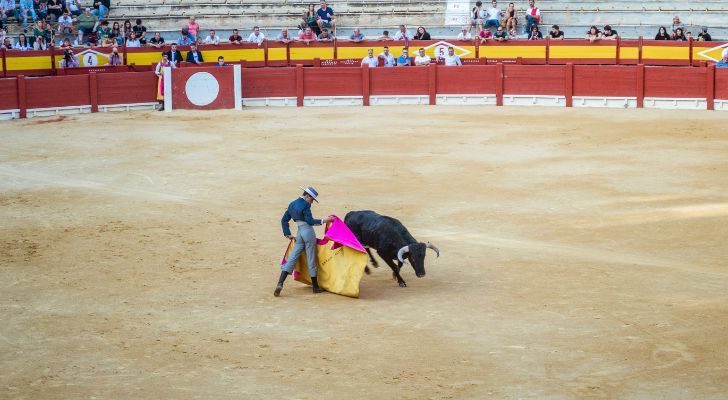
Bullfighting is now illegal in numerous countries, like the United Kingdom, Italy, and Canada. However, despite many people not supporting it, the event still takes place in a few countries.
Eight countries still allow bullfighting, including France, Spain, and Portugal. There’s a catch with Spain, though, as some parts of the country, like Calonge, Tossa de Mar, Vilamacolum, and La Vajol, have banned it.
With regards to bullfighting not being totally outlawed in the country, it boils down to preserving Spanish culture.
For example, the Spanish autonomous community of Catalonia banned the blood sport back in 2010, but the ruling was overturned in 2016 after the ban was deemed unconstitutional.
Bulls getting angry when they see a red cape is a myth. They don’t even see red the same way we do!
It’s the waving motion of the cape that triggers the bull to attack; the use of red capes has absolutely nothing to do with provoking bulls.
Red capes simply look particularly flashy during the conclusion of a bullfight, and the color red is really good at hiding blood stains!
Sadly, this Spanish tradition is an example of extreme animal cruelty, which is support for bullfighting is waning, with many countries banning the blood sport.

